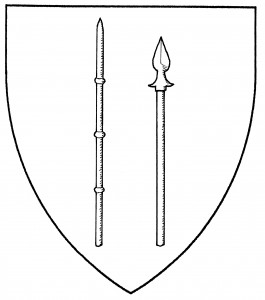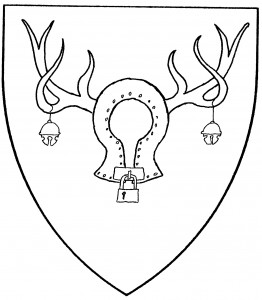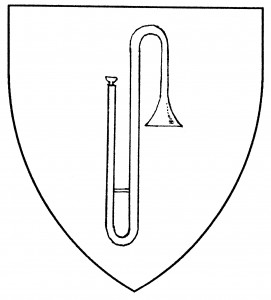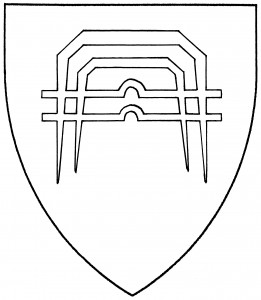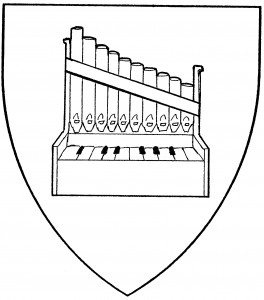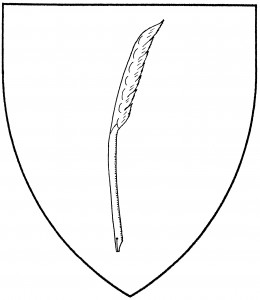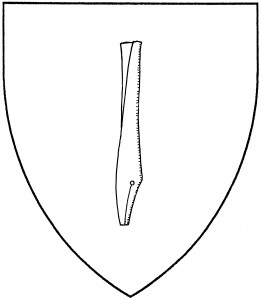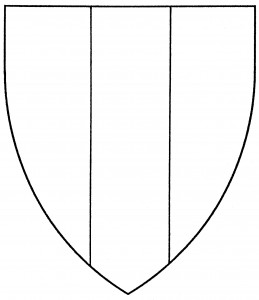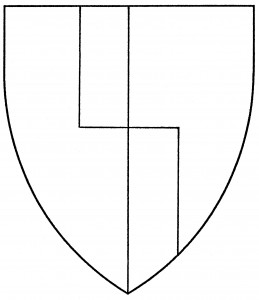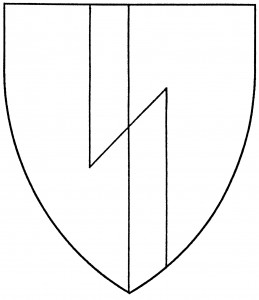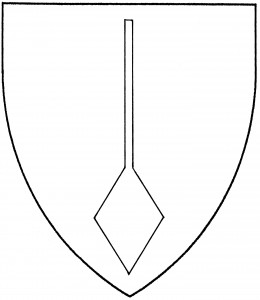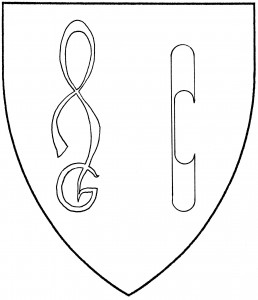A spear is a weapon for thrusting or throwing, with a sharp point set on a long shaft. It’s a period charge, found in the arms of Carlhaw, c.1450 [Ingeram 70]. The spear is palewise, with the spearhead (also called its “steel”) to chief, by default; a “spear proper” has a brown wooden shaft and a sable steel. The shaft and steel need not be the same tincture: the shaft’s tincture is considered the main tincture of the spear for contrast and conflict purposes.
In period armory, the most common form has a lozenge-shaped spearhead. The spearhead may have a crossbar partway down the shaft; this variant may be explicitly blazoned a “boar-spear”.
Also common in period armory is the “tilting spear”, also called a “lance” or “tourney spear”, characterized by its bell-shaped hand guard above the handle. Its most famous period example is the canting arms of Shakespeare, granted 1596 [Wagner 73].
In Society armory, there are examples of the “javelin”, a throwing spear used in sport, simply a sharpened stick; and the “pikestaff” or “pike”, a very long spear with a leaf-shaped head. For related charges, see pole-arm, spearhead, trident. See also staff.
The Order of the White Lance, of the Middle, bears: A lance argent.
The Baron of Red Spears bears: Or, two boar-spears in saltire surmounted by another palewise gules, overall a laurel wreath vert.
Angus Kerr bears: Or, a spear sable.
Stephen of Coldjoust bears: Ermine, a tilting spear palewise azure.


